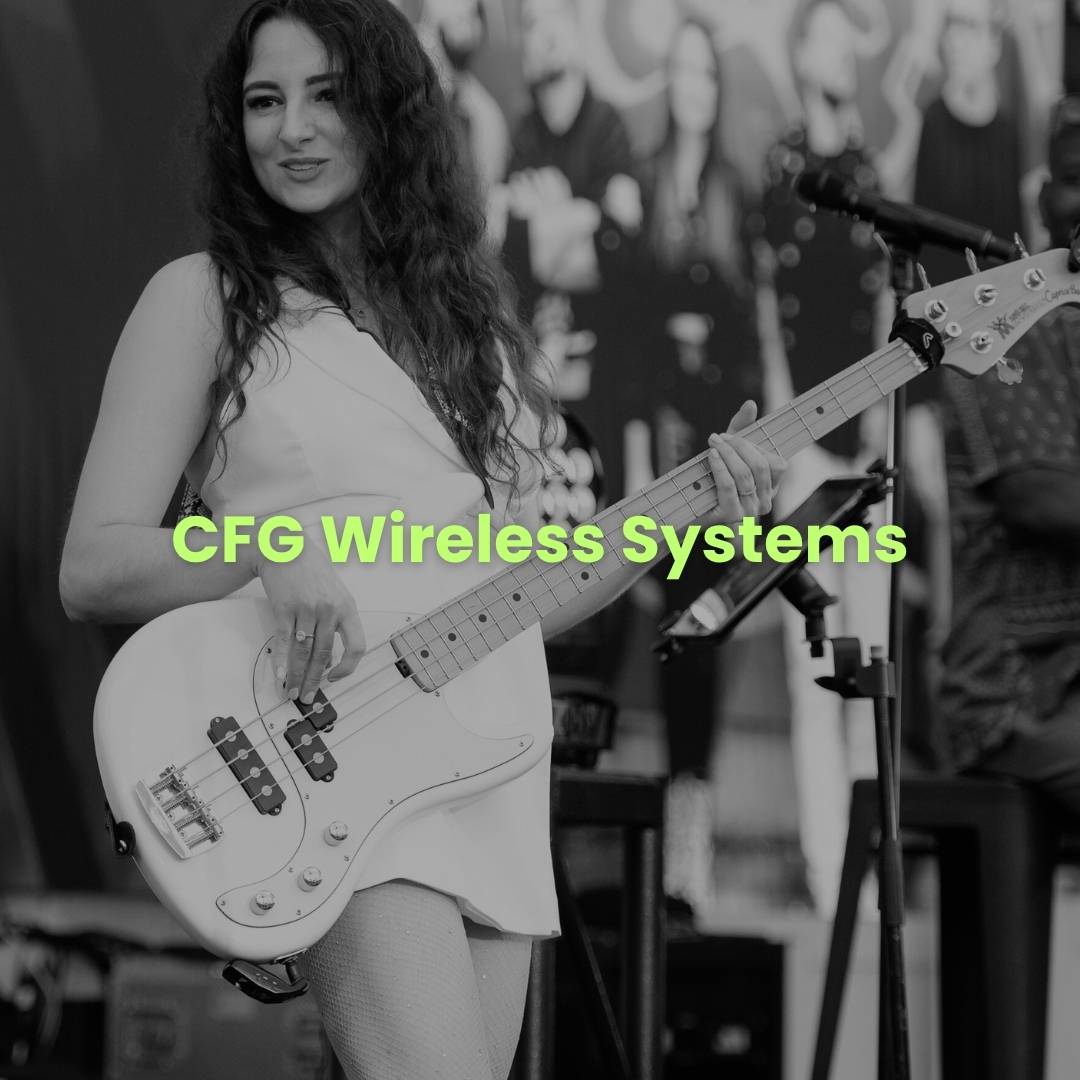Wireless guitar and bass systems have become essential for musicians seeking the freedom to move on stage without being tethered by cables. Two common frequency bands for these systems are 2.4GHz and 5.8GHz. Understanding the differences between these frequencies is crucial for making an informed choice.
Understanding the Frequency Bands
2.4GHz Systems:
- Interference: The 2.4GHz band is widely used for various devices, including Wi-Fi, Bluetooth, and microwaves, leading to potential interference. This can be problematic in crowded environments, causing signal dropouts.
- Range and Penetration: These systems generally offer good range and can penetrate obstacles better than 5.8GHz systems, making them suitable for indoor use with walls and other obstructions.
- Latency: Modern 2.4GHz systems have managed to reduce latency significantly, providing near-instantaneous audio transmission, which is crucial for live performances.
5.8GHz Systems:
- Interference: The 5.8GHz band is less congested compared to 2.4GHz, reducing the likelihood of interference from other wireless devices. This can result in a more stable and reliable signal.
- Range and Speed: While 5.8GHz systems typically offer shorter range due to lower penetration power, they compensate with higher data transmission speeds, which can enhance audio quality and reduce latency.
- Usage Environment: These systems are ideal for outdoor performances or settings with minimal physical obstructions where signal interference is less of a concern.
Comparing Specific Systems: CF-80 vs. SonikSphere
CF-80 2.4GHz Wireless System:
- Range: Offers a reliable range suitable for small to medium-sized venues.
- Interference: More susceptible to interference in environments with heavy Wi-Fi traffic.
- Battery Life: Provides a decent battery life, suitable for extended gigs.
- Sound Quality: Generally provides good sound quality with minimal latency, making it a reliable choice for most indoor settings.
SonikSphere 5.8GHz Wireless System:
- Range: Although it has the same range, it provides a stable connection with minimal interference.
- Interference: Less prone to interference due to the less crowded 5.8GHz band.
- Battery Life: Equipped with a long-lasting battery, ideal for extended performances.
- Sound Quality: Offers superior sound quality with higher data transmission rates, ensuring clear and uninterrupted audio.
Conclusion: Which is Better?
Choosing between the CF-80 2.4GHz and the SonikSphere 5.8GHz depends on your specific needs:
- For Indoor Performances: The CF-80 2.4GHz system is a solid choice due to its better penetration through walls and reliable performance in less crowded Wi-Fi environments.
- For Outdoor or High-Interference Environments: The SonikSphere 5.8GHz system excels with its higher data transmission speeds and reduced interference, making it ideal for outdoor gigs or crowded wireless environments.
Ultimately, both systems offer excellent features, but the SonikSphere 5.8GHz might edge out for those prioritizing stability in diverse performance settings. For musicians needing versatility and reliability indoors, the CF-80 remains a dependable choice.
For detailed information about each system, visit:
CF-80 2.4GHz Wireless System
SonikSphere 5.8GHz Wireless System






